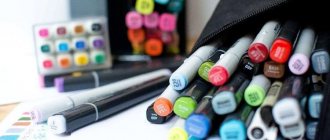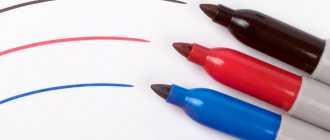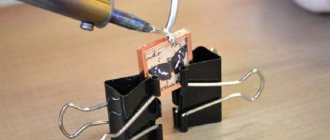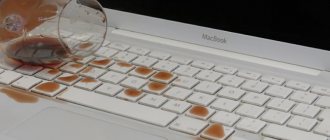Stationery products are extremely popular among teachers, schoolchildren, students, office workers and many others. The presence of a large amount of documentation also implies errors, which sometimes need to be corrected in a minimum period of time. A proofreader will help make your work easier and save sheets for reprinting. The white liquid in a jar with a brush sometimes dries out at the most unpredictable moment, which is why you have to use all available means. Sometimes the corrector ceases to perform its function even before the end of its service life. In this article we will try to talk about the most popular and effective methods of dissolving concealer and prolonging its usefulness.
How can you remove corrector from paper?
Special solvents are sold for correction pens. From available means, it is recommended to use alcohol - wet a cotton swab or disk, apply and hold for a minute. Then the corrector should be easily removed with a fingernail.
Interesting materials:
What are the most popular topics on Yandex Zen? What territories were lost by France as a result of the Franco-Prussian War? What types of climate are distinguished in the temperate climate zone? Describe them briefly? What types of radars are used in Kazakhstan? Which points belong to the circle? What products are classified as office equipment? What kind of windshield cracks cannot be repaired? What types of triangles are isosceles? What goals did the crusaders pursue? What are the main streets in St. Petersburg?
Best answers
ELENA:
Liquid stroke correctors can be made on the basis of alcohol, which ensures quick drying of the correction fluid (the label usually indicates Fluid) and water-based, which attracts consumers with a lower price, lack of odor and the ability to do without a special thinner of the stroke corrector (the label indicates Aqua) . Look what yours is. The latter can be diluted with water.
Svetlana Nosova:
Correctors are sometimes sold directly with solvent. Perhaps they are available separately.
Olga P.:
The answer is very simple: Oil-based correctors can be diluted with a drop of oil. Alcohol-based correctors can be diluted with alcohol. Water-based corrector - a drop of water.
ZALILOV ILNUR:
The alcohol-based corrector was diluted with regular cologne.
Tatyana Biryukova:
Diana Moroz:
What should I do if the text proofreader has become lively? Answer please)
Andrew Brown:
The Erich Krause corrector has dried out. I got good results when I diluted it with a 50/50 mixture of acetone and ethyl alcohol.
Victoria Gushchina:
If it says Fluid, then you can dilute it with alcohol or cologne (like felt-tip pens); if it says Aqua, then with water. If the label has worn off, you need to smell it. Stinks-FLUID. Doesn't stink - AQUA. I overdid it with the dilution - dry it (leave it for a minute with the lid open).
We suggest you familiarize yourself with How to collect mercury from a thermometer at home?
Georgy Sutyagin:
There is no corrector that is too liquid. As usual, many people do not know that the can contains a mixing ball. Before use, you need to shake the can so that the ball mixes the contents. So that the liquid does not separate from the paint.
Natalya Nikolaevna Kvashina:
wow that helped thank you!!!!
Zheka Born:
The attache corrector was diluted only with White Spirit! Neither alcohol, nor acetone, and especially water, did not help!
The whole truth about the proofreader
Despite the popularity of this stationery product, today there is no universal composition of correction fluid. It is a kind of proprietary secret of each specific manufacturer.
However, the following chemicals are present in each formulation in varying proportions:
- calcium carbonate;
- titanium dioxide;
- highly purified gasoline.
But the most important component is the base of the proofreader, which is known to almost every person interested in this issue, because it is indicated directly on the label of this stationery product.
Important! If you need to remove some inaccuracy in a document right now, you can use our ideas on how to erase pen from paper without a trace.
Liquid types of correctors can be divided into the following categories:
- water based;
- with an alcohol component;
- emulsion based.
The decision on how to dilute the concealer should be made based on the basis of the substance it contains.
Water corrector
Water-based corrective compositions are environmentally friendly and safest for the human body, and therefore are most popular among schoolchildren. The main advantage of this product is the good application of the substance on almost any type of paper.
However, like any product, water-based paint has its drawbacks - long drying time. The substance applied to the paper can dry for about a minute, which can be quite inconvenient when writing.
Important! It is also worth remembering that such correctors do not tolerate low temperatures well, and therefore hypothermia should be avoided when storing them.
Alcohol bar-corrector
Alcohol-containing corrective compositions are more practical to use than their water-based counterparts - due to almost instant drying. In addition, such products are characterized by increased resistance to freezing.
However, alcohol-based barcode corrector has a pungent and unpleasant odor; the substance is easily flammable, and therefore dangerous.
Oil based concealer
The emulsion composition combines all the advantages of alcohol and water-based bases. This corrector has no pungent odor, is non-flammable, dries quickly and is absolutely resistant to low temperatures.
However, the cost of such office supplies is an order of magnitude higher than that of alcohol or water analogues. Yes, and finding such a tool is quite difficult.
Rules for removing a line from clothing
When you see a stain from a concealer, you don’t have to despair and throw the item away. If a white streak appears on the fabric, provide first aid to the victim. Blot the dirty area with a damp cloth or napkin - this will remove any liquid that has not yet been absorbed.
Attention! You need to rub from the edges of the dirt to the center - this way it will not spread. This advice will only work if the corrector has not had time to dry.
If a drop of putty got on your clothes recently, try scraping it off with a nail file and then using a damp cloth to remove the residue.
Advice! Gently rub the dried concealer with an old toothbrush. This will make it easier to remove contamination.
To remove an old stain from clothing, you need to take into account its type and composition, as well as the fabric on which it fell.
Glazier's oil putty
Oil putty, known commercially as glazier's putty, since it is necessary for inserting glass, is prepared as follows: Spanish white is ground into powder, formed from it into a truncated cone or truncated pyramid, and at the top a depression is made into which a small amount of linseed oil is poured. , so that the white will turn into a dough-like mass. When the entire mass turns into dough, stop adding oil, knead the resulting dough and knead well. Before you make putty, learn some secrets of its use.
After this, the putty is cut into pieces and crushed with a wooden mallet. The better the putty is hammered out, the more uniform and flexible it will be and the better it will adhere to bodies.
If such putty is wrapped in canvas soaked in oil, it can be preserved for a long time without change, otherwise after a few days it will become fragile.
Oil putty can be used to putty surfaces to be painted with oil paint.
Puttying can only be done when the wood has already been coated with paint once, because the putty will not stick to damp wood. The putty is rubbed into the cracks and holes using a spatula and, when it dries well, it is polished with pumice soaked in water until the surface takes on a smooth appearance.
Before you make putty at home, you need to remember that the oil type is unsuitable for light paint, because it forms yellowish spots and stripes that will show through. In this case, use putty made from white lead and linseed oil. The method of preparing this putty is the same as oil putty.
When it is necessary to touch up or renew the paint with paint of a different color, the putty should be the same color as the last paint.
How to make your own putty with coloring
To color the putty, paints are used in powder, which is mixed especially carefully with the dough. Before you make your own putty, you need to become familiar with coloring pigments and the rules for their use.
For yellow-brown and dark yellow paints, the following putties are used for puttying:
- Grind white lead, red lead and silberglet with thickly boiled linseed oil; Add a little amber varnish to the resulting dough.
- To prepare the putty with your own hands, mix three parts of slaked lime powder with 2 parts of rye flour and 2 parts of drying oil, which, when thoroughly kneaded, produces a homogeneous plastic dough.
- Prepare a homogeneous dough-like mass from equal parts of crushed brick and lead litharge. Before applying putty, cracks and holes must be pre-lubricated with oil.
Dry and liquid correctors
Office proofreaders can be liquid or dry. The first includes a liquid stroke and a correction pencil, the second - a tape-type corrector.
- Correction fluids are produced in small bottles with a brush, applicator, and sponge applicator built into the cap. This corrector is quite simple and easy to use: just shake the bottle, dip a brush in the liquid and paint over the area that requires correction in one motion. Nevertheless, correction fluids are still considered a somewhat outdated type of touch, since manufacturers have long launched the production of more convenient and ergonomic forms of putty.
- The corrector pencil is no different in shape from a regular pen, but instead of paste, it is filled with correction fluid, which flows out through a hole in the metal tip (hole diameter - 1 mm). Using a correction pen, you can precisely correct the smallest details of the text, even the “flaws” of individual characters. But “painting over” a large piece of text with such a pencil will not be very convenient; here the advantage clearly remains on the side of the correction fluid in a bottle with a brush (one stroke and a whole line is painted over).
- Corrective roller tape is the latest “fashion” in the world of correctors. This is a dry composition contained in a convenient and ergonomic roller. Using a tape corrector, you can correct the required section of text in a matter of seconds: the tape applied to the paper (if, of course, the corrector is of high quality and is used correctly) will be practically invisible not only by sight, but also by touch. Correction tape is not without its drawbacks: with its help it is impossible to precisely correct minor flaws in symbols; The width of the tape is standard (4-6 mm), that is, to correct small font with small line spacing, you can go beyond the edge of the line.
When purchasing a tape corrector, give preference to models with a transparent case, which will allow you to control tape consumption
Many people ask the question “How to dilute the barcode corrector?” The answer to this question is very simple: water-based compositions can be diluted with water, alcohol-based ones - with alcohol or vodka (preferably a pure substance without any impurities or flavorings that can spoil the quality of the correction fluid).
We suggest you familiarize yourself with How to store propolis at home
As you can see, there is still no universal corrector; each type has its own area of application. However, this is not a particular problem, since the cost of corrective compositions will allow everyone to easily purchase all three types of barcode correctors and, if necessary, use one or another option.
Olya
Living deliciously is a whole science!
What is a corrector pen?
The Erich Krause “Arctic White” correction pen is used for the most accurate and accurate correction of printed and handwritten text. ... The ball inside the pen helps to stir the liquid evenly before use. The tight-fitting clip cap prevents the absorbent ink from drying out prematurely.
Interesting materials:
Who is the author of the story Cosette? Who is the author of the Sistine Madonna? Who is the author of the fairy tale about Winnie the Pooh? Who is the author of the fairy tale The Blue Bird? Who is the author of the fairy tale in which the main characters were called the needlewoman and Sloth? Who is the author of Shadows Vanish at Noon? Who is Bazarov Arkady? Who is Bellatrix to Sirius? Who takes the bride's bouquet? Who is richer Stark or Wayne?
Putty for stone
For dry stone structures, mix 2 parts of lead litharge with 1 part of powdered lime and 1 part of fine sand. The resulting mixture is stored in tightly sealed boxes. Immediately before use, putty is prepared from it by mixing with hot linseed oil. Before making stone putty with your own hands, heat the mixture to a temperature of 40 degrees Celsius.
For stone structures exposed to moisture, take 5 parts of freshly burnt lime powder, 2'/2 parts of crushed brick, 1/2 part of scale and 1/4 part of manganese oxide. Flaxseed oil is added to this mixture to obtain a thick dough, which is dissolved in a mortar until smooth. Before use, dry the cracks thoroughly and spread them with oil. The putty hardens after 8-10 days.
Putty for stone walls of water pools is prepared as follows: fuse 48 parts of rosin, 6 parts of wax, 2 parts of shellac and 2 parts of mastic and add, with constant stirring, 6 parts of turpentine oil, 3 parts of crushed sulfur and 16 parts of crushed brick. The cracks are heated and putty is applied with hot putty, which quickly hardens. Leveling is done with a spatula or chisel.
A hard and waterproof putty can be prepared from Portland cement or slaked lime and a concentrated solution of Cologne glue. The putty is used freshly prepared; hardens after 3 days and then becomes impermeable to water.
For underwater stone structures, prepare a mixture of 11 parts of air-disintegrated lime, 5 parts of crushed brick, 1/2 part of crushed glass, 1 part of scale and 4 parts of hot linseed oil. This mixture is mixed well, as a result of which a plastic mass is obtained, which is spread into the cracks, previously lubricated with oil.
According to another recipe, they take 700 parts of well-sifted crushed brick, which must be well fired and completely dry. Then 625 parts of the best plaster, 500 parts of iron filings, 50 parts of vitriol, 100 parts of uncrushed ink nuts, 500 parts of bolus, 500 parts of potash, a handful of table salt, a little fresh ox blood, egg white and vinegar. From all this a soft dough-like mass is prepared, which is spread into the cracks. The same putty can be suitable not only for underwater stone structures, but also for smearing iron hooks, bars, etc. into stones instead of lead.
To grease marble, mix fresh cottage cheese with ox blood and add to the mixture such an amount of sifted quicklime powder until a soft plastic dough is formed.
To align the fallen parts and to glue them, the so-called sculptural putty is used, which hardens in air like stone. Prepared from plaster, marble dust and liquid glue.
For alabaster, burnt gypsum is placed in a cold saturated alum solution, then calcined again, pounded and dough is prepared into it, kneading it with an alum solution. Such plaster hardens more slowly than ordinary plaster prepared with water, but it becomes hard as stone and is suitable not only for plaster figures, but also for marble.
A good putty can be prepared by rinsing fresh cottage cheese several times with water, then squeezing it out and mixing it with 5-6 parts of a saturated solution of liquid glass.
Putty for iron
Prepare a dough from 2 parts iron filings, 1 part iron sulfate and vinegar. This dough is driven into the seams as tightly as possible with a chisel and hammer. This putty is used to repair iron tanks.
To seal iron hooks, bolts and other things into stone, putty is used, for the preparation of which you take 7 parts of gypsum, 2 parts of protein and water. Iron putty should be used immediately after preparation.
According to another method, for the same purpose, mix 2 parts by weight of crushed brick, 1 part of crushed slaked lime and 72 parts of iron filings with water.
An excellent and cheap material for smearing iron into stone is Portland cement, which is mixed with some iron filings or sifted scale and then turned into a dough by adding water. This putty dries quickly and then acquires the hardness of stone.











